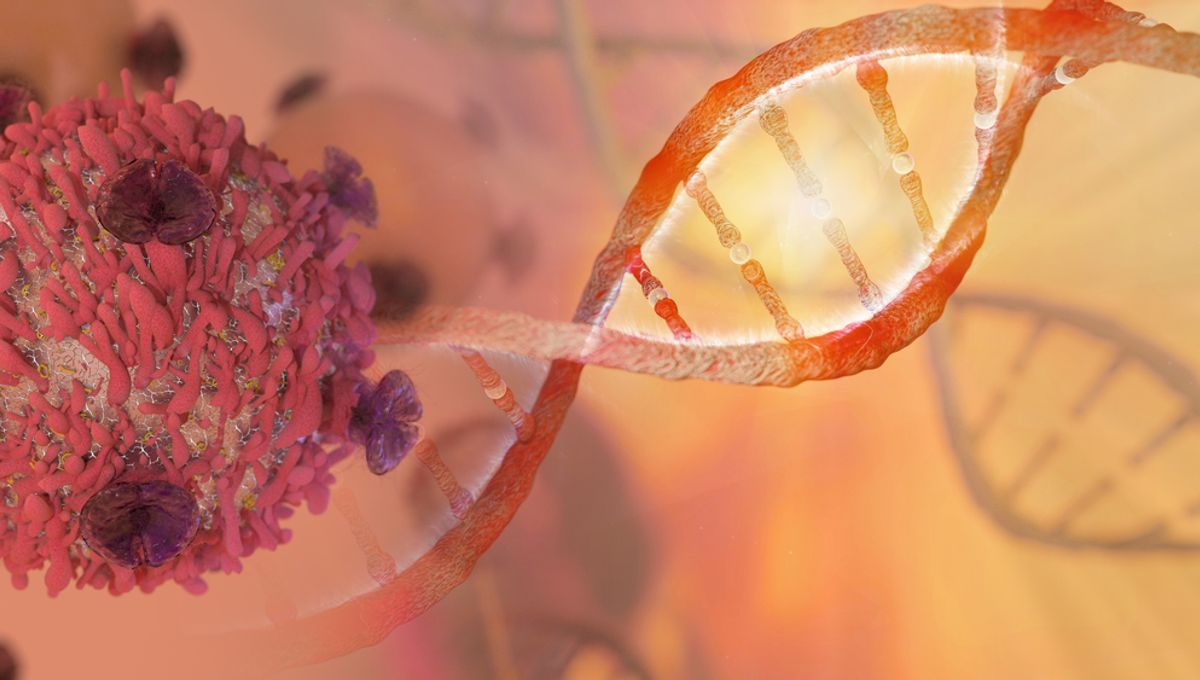
An extremely rare genetic condition that has never been seen before caused a Spanish woman to developed 12 different types of tumor before the age of 30, say the authors of a new study. Now aged 36, the patient has been disease-free since 2014, when a tumor was surgically removed from her colon.
Born in 1986, the patient first underwent chemotherapy at the age of 2 for a sarcoma in her left auditory canal, and went on to suffer from a new tumor every few years. Remarkably, each subsequent illness was of a different type and occurred in a different part of the body, with at least five of the 12 tumors being malignant.
In 2017, researchers screened the woman for genes that are commonly associated with hereditary cancer, but found no risk factors. However, an analysis of the subject’s entire genome revealed something truly staggering: both copies of a gene called MAD1L1 were found to carry a mutation.
MAD1L1 codes for a protein called MAD1, which plays a role in regulating cell division and proliferation. We all inherit two copies of this gene – one from each parent – and while it’s possible for a person to carry a mutation on one of these, embryos that inherit two mutated copies always die in the womb.
Commenting on the woman’s remarkable condition in a statement, study author Marcos Malumbres said “we still don’t understand how this individual could have developed during the embryonic stage, nor could have overcome all these pathologies.”
Describing the effects of these mutations, the researchers reveal that dysregulated cell proliferation resulted in 30 to 40 percent of the woman’s blood cells carrying the wrong number of chromosomes. Under normal circumstances, all human cells have 23 pairs of chromosomes, although this is sometimes altered in people with a condition called mosaic variegated aneuploidy (MVA).
Because the majority of cancer cells have extra or missing chromosomes, people with MVA may be more susceptible to the illness. Congenital defects and learning disabilities are also common in those with aneuploidy, although the study authors say that the patient did not have any intellectual disabilities.
However, she did present with a number of physical symptoms, including microcephaly, an underdeveloped jaw and eye sockets, and nystagmus – which is characterized by repeated involuntary eye movements. Despite these genetic abnormalities, the study authors say that the woman has been able to live a normal life – albeit one that has been severely impacted by repeated illnesses.
Amazingly, this is the first time that scientists have ever seen a living person with two mutated copies of the MAD1L1 gene. Commenting on the uniqueness of the woman’s condition, study author Miguel Urioste explained that “academically we cannot speak of a new syndrome because it is the description of a single case, but biologically it is.”
Aneuploidy itself is not unheard of, with Down’s syndrome being the most common form of the condition. However, Urioste says that “this case is different because of the aggressiveness, the percentage of aberrations it produces and the extreme susceptibility to a large number of different tumours.”
In yet another incredible twist, the same condition that causes the woman’s susceptibility to cancer also appears to help her recover from the illness. Noting the relative ease with which she has continually overcome the disease, the researchers speculate that her immune system may have developed the ability to target and destroy aneuploid cancer cells.
Given that most cancer cells are indeed aneuploid, the study authors say that better understanding the woman’s condition could provide clues as to how other patients’ immune systems can be stimulated to destroy tumors.
The study has been published in the journal Science Advances.
Source Link: Woman Gets 12 Tumors By Age 30 Due To One-Of-A-Kind Genetic Mutation